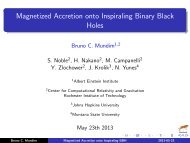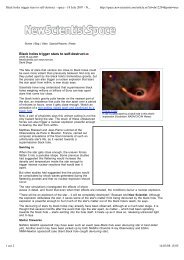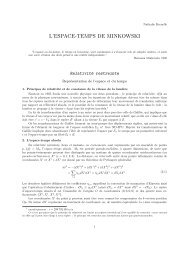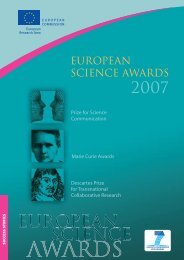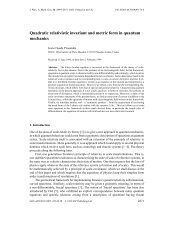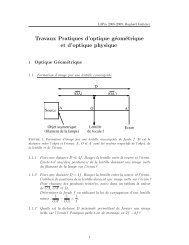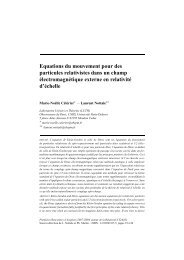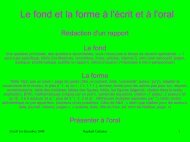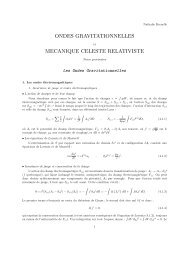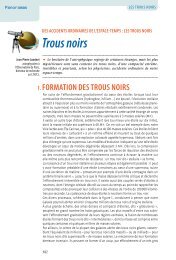Equation of state for compact stars Lecture 1 - LUTh
Equation of state for compact stars Lecture 1 - LUTh
Equation of state for compact stars Lecture 1 - LUTh
Create successful ePaper yourself
Turn your PDF publications into a flip-book with our unique Google optimized e-Paper software.
Crystallization <strong>of</strong> ions<br />
At T < Tm, an infinite (unlimited, unbound) ion motion is replaced by oscillations<br />
near equilibrium positions: a crystal is <strong>for</strong>med.<br />
Internal energy at T = 0 consists <strong>of</strong> two parts,<br />
where<br />
U0 = UM + Uq, , (26)<br />
UM = −N N CM(Ze) 2 /ai. (27)<br />
Here, UM is the classical static-lattice energy, CM is the Madelung constant. Uq<br />
accounts <strong>for</strong> the zero-point quantum vibrations.<br />
CM(bcc) = 0.895929 (Fuchs 1935) bcc - body-centered-cubic<br />
Klaus Fuchs - famous <strong>for</strong> his role in the Soviet A-bomb program in 1940s<br />
CM(fcc) = 0.895874, fcc - face-centered-cubic<br />
CM(hcp) = 0.895838 fcc - hexagonal closest packing, see, e.g., Kittel 1986.<br />
The ion-sphere expression UM = −0.9 N N Z 2 e 2 /ai is sufficiently accurate <strong>for</strong> the<br />
ion liquid and solid, as long as the ions are strongly coupled (Γ ≫ 1)<br />
Pawe̷l Haensel (CAMK) EOS <strong>for</strong> <strong>compact</strong> <strong>stars</strong> <strong>Lecture</strong> 1, IHP Paris, France 22 / 54



